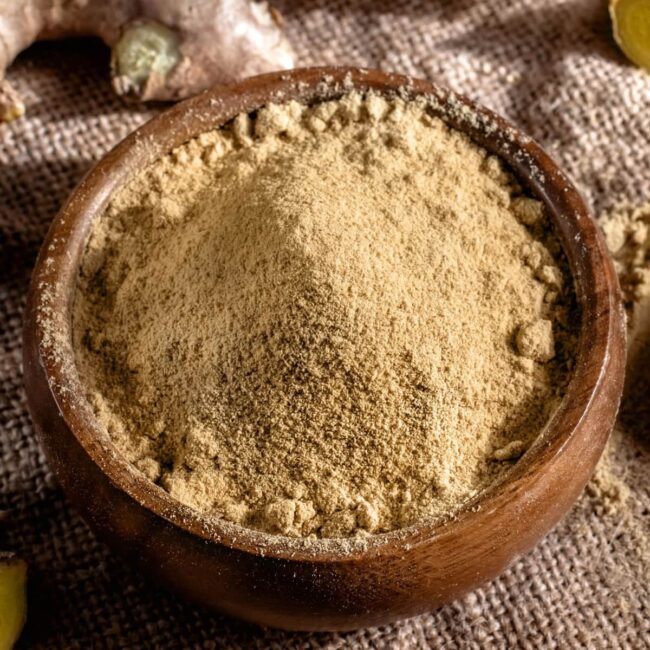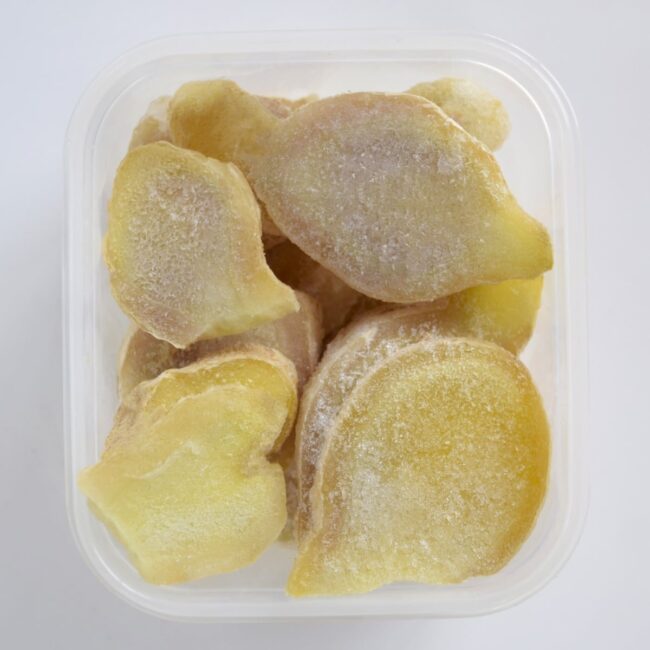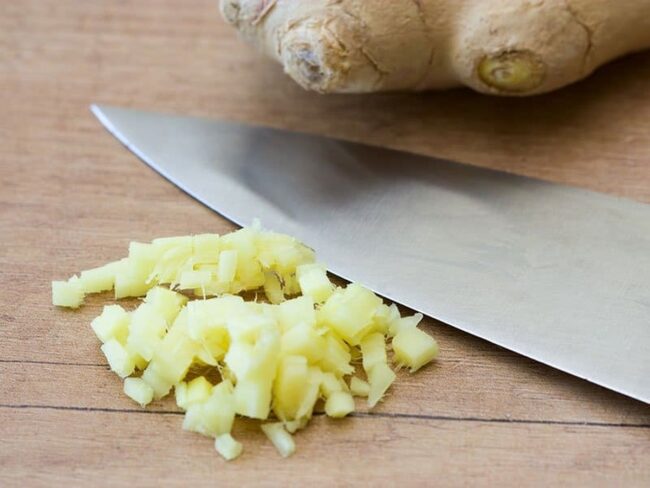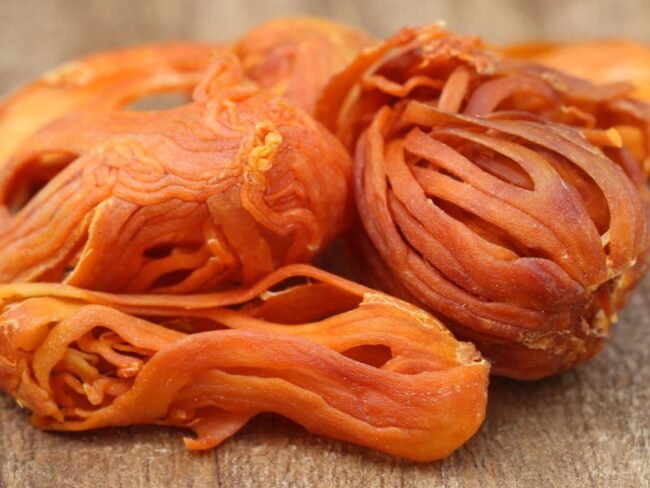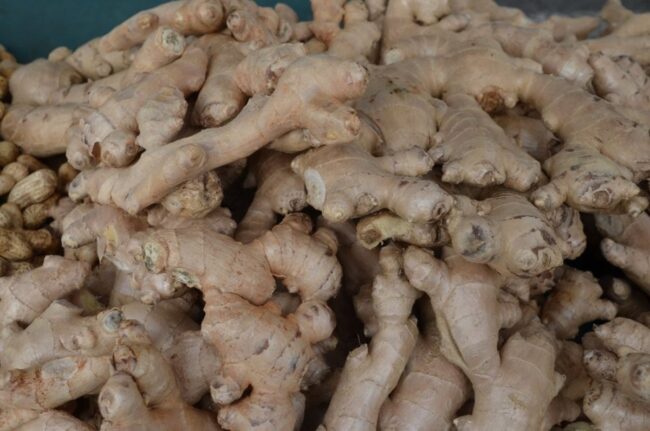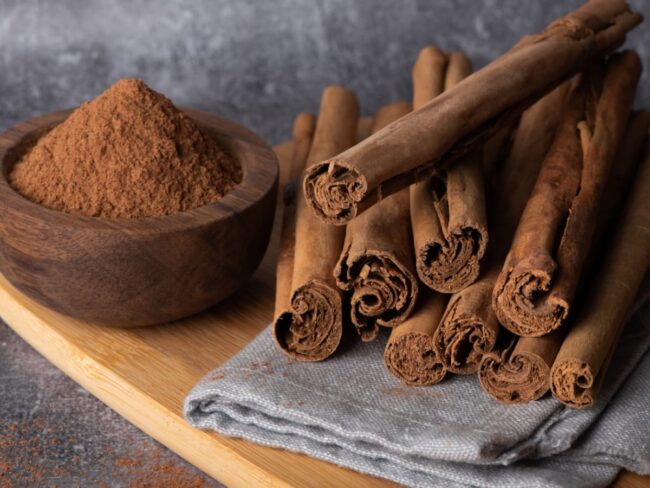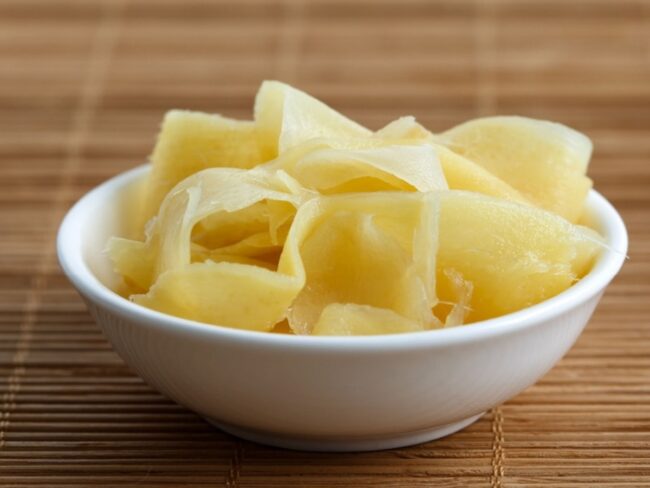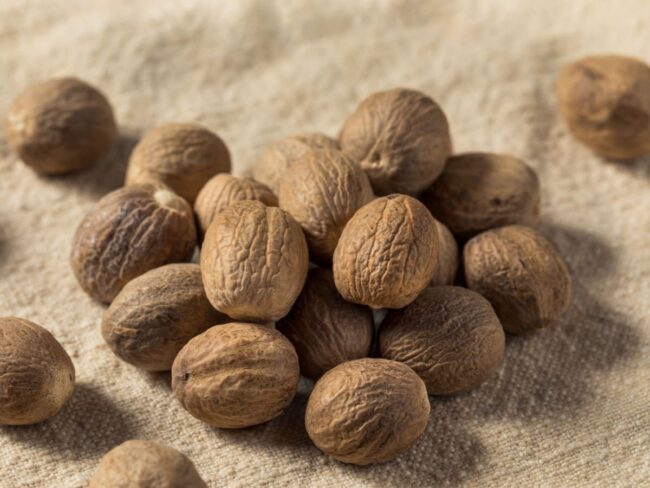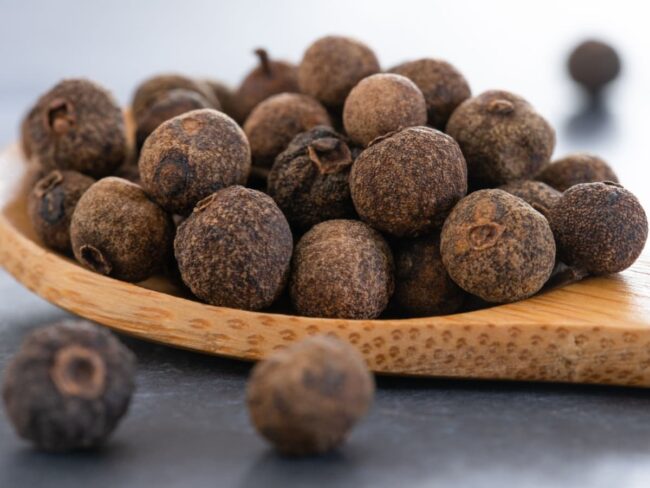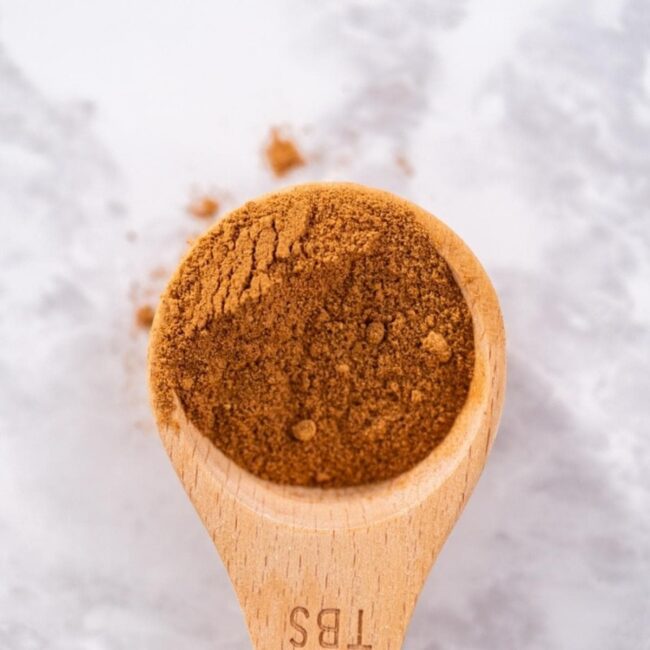14 Zesty Ginger Substitutes to Spice Up Your Cooking
Fresh ginger and ginger substitutes offer varying levels of warmth and spice, perfect for cooking and baking. Some alternatives bring a milder heat, while others deliver a sharper kick.
The best substitute depends on the dish, whether it's sweet or savory. Some choices work well in teas and marinades, while others blend seamlessly into sauces.
The right option enhances flavors without overpowering the dish. These 14 ginger substitutes will help you achieve the right balance in any recipe:
Health Benefits of Ginger
Ginger is a remarkable root known for its powerful health benefits and medicinal properties. Revered globally, this potent ingredient contains gingerols, the active compounds that deliver its antibacterial and anti-inflammatory effects.
Incorporating ginger into your routine not only helps combat nausea but may also support weight management by lowering insulin levels with just a couple of grams daily. Emerging research highlights its potential in reducing chronic pain associated with osteoarthritis while simultaneously promoting heart health through cholesterol regulation.
Additionally, some studies suggest it could offer protective effects against cognitive decline and infections like gingivitis due to its natural healing abilities.
Fresh Ginger vs. Ginger Substitutes: What Works Best?
Fresh ginger adds bold heat and aroma, but sometimes a substitute is needed. Explore the best alternatives and when to use them in cooking and baking.
Ground Ginger
Ground ginger is a dried form of the ginger root, offering a milder taste than its fresh counterpart. The drying process strips away essential oils that contribute to the spice and complexity found in fresh ginger.
This concentrated flavor makes ground ginger an excellent choice for baking, particularly in recipes like cookies or cakes where you want warmth without overwhelming heat. When substituting, remember that just a quarter teaspoon can replace one tablespoon of fresh ginger, making it easy to adjust your recipe while still achieving delicious results with this versatile ingredient.
You’ll find ground ginger enhances both sweet and savory dishes alike.
Frozen Ginger
Frozen ginger serves as an excellent alternative to fresh ginger, maintaining its robust flavor and aroma. Conveniently prepped for use straight from the freezer, it can be peeled and grated with ease.
Utilizing frozen ginger in recipes allows you to enjoy that signature zing without compromising on taste or quality. When a recipe calls for fresh ginger, you can simply swap in equal amounts of this handy substitute to achieve similar results in your dishes.
This versatile ingredient not only enhances savory meals but also elevates sweet treats like cookies and cakes seamlessly.
Ginger Paste
Ginger paste is a convenient alternative to fresh ginger, offering a smooth texture that enhances your dishes. This pureed form of ginger often incorporates oil for added richness and must be refrigerated after opening, lasting up to five days in an airtight container.
For longer storage, freezing it allows you to enjoy its flavor for as long as five months. When substituting fresh ginger with this versatile ingredient, one teaspoon of ginger paste can replace about one inch of the root.
It seamlessly fits into any recipe that requires fresh ginger while saving time on preparation and minimizing waste.
Minced Ginger
Minced ginger is finely chopped ginger that often incorporates ingredients like oil, sugar, and salt for added flavor. This preparation offers a milder alternative to fresh ginger while still retaining its aromatic qualities.
Ideal for marinades or stir-fries, it enhances dishes with its subtle warmth without overwhelming other flavors. When substituting minced ginger for fresh in recipes, you can typically use an equal amount; however, feel free to increase the quantity slightly if you're seeking more intensity.
Its versatility makes it a valuable ingredient in various culinary creations where a hint of spice is desired.
Ginger Juice
Ginger juice serves as a versatile ingredient derived from the ginger root, offering a unique flavor profile that can stand in for fresh ginger when needed. While not frequently chosen as a direct substitute, it proves handy in various culinary applications such as baking or enriching soups.
The natural enzymes present in ginger juice make it particularly effective for marinating meats, where they work to tenderize and enhance the protein's texture. You might find this liquid gold adds depth to sauces too, making your dishes more complex without overpowering them.
Its distinct taste ensures you have an option at hand when fresh ginger is unavailable while still delivering satisfying results on your plate.
Mace
Mace is a spice known for its warm, sweet aroma and subtle flavor profile. Derived from the outer layer of nutmeg seeds, it adds a unique touch to various dishes.
This ingredient finds its way into baked goods like cakes and cookies while also enhancing savory meals such as eggs and cheese. When you need an alternative to fresh ginger in your recipes, use just ¼ teaspoon of mace for each tablespoon called for.
Its versatility makes it an excellent choice for both breakfast items and desserts alike; you'll discover how easily it elevates familiar flavors without overpowering them.
Crystallized Ginger
Crystallized ginger offers a sweet alternative to fresh ginger, presenting a unique twist for those looking to enhance their dishes. This treat consists of root ginger that's been simmered in sugar syrup and coated with granulated sugar, resulting in its sugary flavor profile.
When you're out of fresh ginger, you can easily swap it by using three tablespoons of minced crystallized ginger for every tablespoon required. Its intense sweetness pairs beautifully with both savory and sweet recipes alike.
Having this ingredient on hand opens up new culinary possibilities while keeping your meals flavorful without the heat typically associated with raw ginger.
Cinnamon
Cinnamon is a spice that brings warmth and depth to both savory and sweet dishes, making it an excellent alternative when fresh ginger isn't on hand.
Derived from the inner bark of specific trees, this aromatic seasoning can be found in various forms, either as ground powder or rolled sticks, and enhances flavors in tagines with chicken or lamb, as well as Asian curries.
Its versatility shines through during festive seasons, particularly around Christmas when it's commonly added to baked goods like cinnamon rolls.
For recipes calling for fresh ginger, using ¼ teaspoon of cinnamon per tablespoon allows you to maintain a balanced flavor profile while still enjoying its unique essence.
Pickled Ginger
Pickled ginger offers a tangy alternative to fresh ginger, primarily used in sushi dishes. Its sharp flavor can add an unexpected zing to various recipes, though it lacks the depth and warmth of raw ginger root.
While not ideal as a direct substitute, its unique taste shines through when paired with seafood or in Asian-inspired salads. Utilizing pickled ginger adds an interesting twist to your meals whenever you find yourself without fresh roots on hand.
This ingredient brings a distinct acidity that complements many savory flavors beautifully.
Nutmeg
Nutmeg stands out as a versatile spice with a warm and aromatic flavor profile. Sourced from the seeds of the nutmeg tree, Myristica fragrans, it can be used freshly grated or in ground form to enhance your dishes.
This ingredient shines in both savory and sweet recipes, making it an excellent match for vegetables like cabbage and broccoli alongside heartier options such as sausages, pasta, or rice. When you're out of fresh ginger, you can seamlessly replace each teaspoon called for with an equal amount of nutmeg to maintain depth in your cooking.
Its unique taste brings a delightful warmth that elevates any meal effortlessly.
Cardamom And Turmeric
Cardamom and turmeric serve as intriguing alternatives to fresh ginger, bringing their own unique profiles into the mix. While turmeric contributes a more bitter and earthy flavor, cardamom introduces nutty notes with hints of citrus that can enliven any dish.
These spices won't replicate ginger's taste but will enrich your culinary creations with new dimensions. When substituting, a quarter teaspoon of each spice is recommended for every tablespoon of fresh ginger needed in your recipe.
Incorporating these substitutes allows you to explore diverse flavors while still achieving an enjoyable outcome in your cooking adventures.
Allspice
Allspice serves as an intriguing alternative to fresh ginger, often recognized for its distinct sweetness and mild spiciness reminiscent of the root. Known colloquially as Jamaica pepper, this spice is a staple in Jamaican dishes, infusing recipes with warmth and depth without replicating ginger’s exact flavor.
You can easily enhance stews or meat-based meals featuring beef or lamb by incorporating just ½ to 1 teaspoon of allspice per recipe. In American kitchens, it frequently finds its way into seasonal baked treats, offering that comforting hint of spice we crave during colder months.
When substituting for fresh ginger in your cooking adventures, remember that a mere ¼ teaspoon of allspice can replace each tablespoon called for in your dish.
Pumpkin Pie Spice
Pumpkin pie spice offers a warm, aromatic flavor profile that beautifully replaces fresh ginger in various recipes. This spice blend typically includes nutmeg, cinnamon, allspice, and ginger itself, making it an excellent alternative when you're short on the fresh root.
Adjusting your measurements is straightforward; just use an equal amount of pumpkin pie spice for every teaspoon of fresh ginger called for in your dish. You’ll find that this substitution not only maintains the recipe's integrity but also infuses it with a cozy warmth perfect for seasonal treats or savory dishes alike.
The versatility of pumpkin pie spice makes it a staple to have on hand whenever you want to enhance flavors without compromising quality.
Galangal
Galangal is a root native to Southeast Asia that brings a unique flavor reminiscent of both turmeric and ginger. Its distinct taste makes it an intriguing alternative when fresh ginger isn't available, often used in Asian cuisines.
While sourcing galangal might require visiting specialty food stores or shopping online, its versatility allows for easy substitution in recipes at a 1:1 ratio; however, adjusting slightly up to 1.25 parts can enhance the dish without overpowering other ingredients since it's milder than traditional ginger root. If you're seeking alternatives for your favorite dishes, like homemade ginger ale, consider this aromatic root as your go-to choice for those moments when fresh ginger is out of reach.
How to Pick Fresh Ginger Root
Fresh ginger root is essential for bringing a warm, zesty kick to your dishes. Selecting quality ginger involves looking for smooth skin that feels firm and heavy; avoid any with wrinkles or mold spots.
Specialty Asian markets often offer the best varieties, showcasing vibrant roots free of excessive knots. This aromatic ingredient not only enhances flavor but also packs numerous health benefits, making it a staple in many kitchens worldwide.
Finding top-notch ginger elevates your culinary creations effortlessly.
How to Keep Ginger Fresh in the Fridge
Ginger root is a versatile ingredient known for its aromatic and zesty flavor, enhancing both savory and sweet dishes. Storing it properly ensures you enjoy its full potential over time.
Keeping the ginger in the vegetable crisper drawer of your fridge helps maintain its freshness; just make sure not to peel it first. Sealing it inside a plastic bag while removing excess air creates an optimal environment for preservation, although a brown paper bag serves as a suitable alternative if needed.
When dealing with cut pieces, patting them dry with kitchen paper prevents moisture from diminishing their shelf life, so it's wise to keep the root whole until you're ready to use it.
Can You Freeze Ginger? How to Do It Right
Freezing ginger root is an effective method for preserving its freshness and flavor. By placing the unpeeled ginger in a ziplock freezer-safe bag, you can maintain its robust essence over time.
Ensuring all the air is pressed out before sealing prevents freezer burn and keeps it ready for your culinary needs. Whenever you need some zest in your dishes, simply grab what you need from this convenient stash.
This approach allows you to enjoy that spicy kick of ginger long after you've bought it fresh.
Preserving Ginger in Alcohol
Preserving ginger in alcohol is a practical method for extending its shelf life while infusing flavors.
Simply place peeled ginger into a small glass jar and submerge it with your choice of spirit, such as sherry or vodka, which are both excellent options.
This technique allows the ginger to maintain its essence for several weeks; however, if you notice cloudiness developing in the liquid, it's time to discard it due to potential bacteria or mold growth.
Keeping an eye on your infusion ensures that you enjoy fresh-tasting ginger without any spoilage concerns.
How to Grow Your Own Ginger
Growing ginger at home is a rewarding way to ensure you always have fresh roots available. By planting just a small piece of ginger root in a pot on your kitchen windowsill, you'll enjoy easy access whenever recipes call for this aromatic ingredient.
With minimal care and regular watering, the plant thrives and can be harvested repeatedly without losing its vigor. Simply snip off what you need and let it continue to flourish; it’s an effortless addition that brightens up any culinary creation with its zesty flavor.
Having your own supply means fresher meals right at your fingertips while adding greenery to your space.

